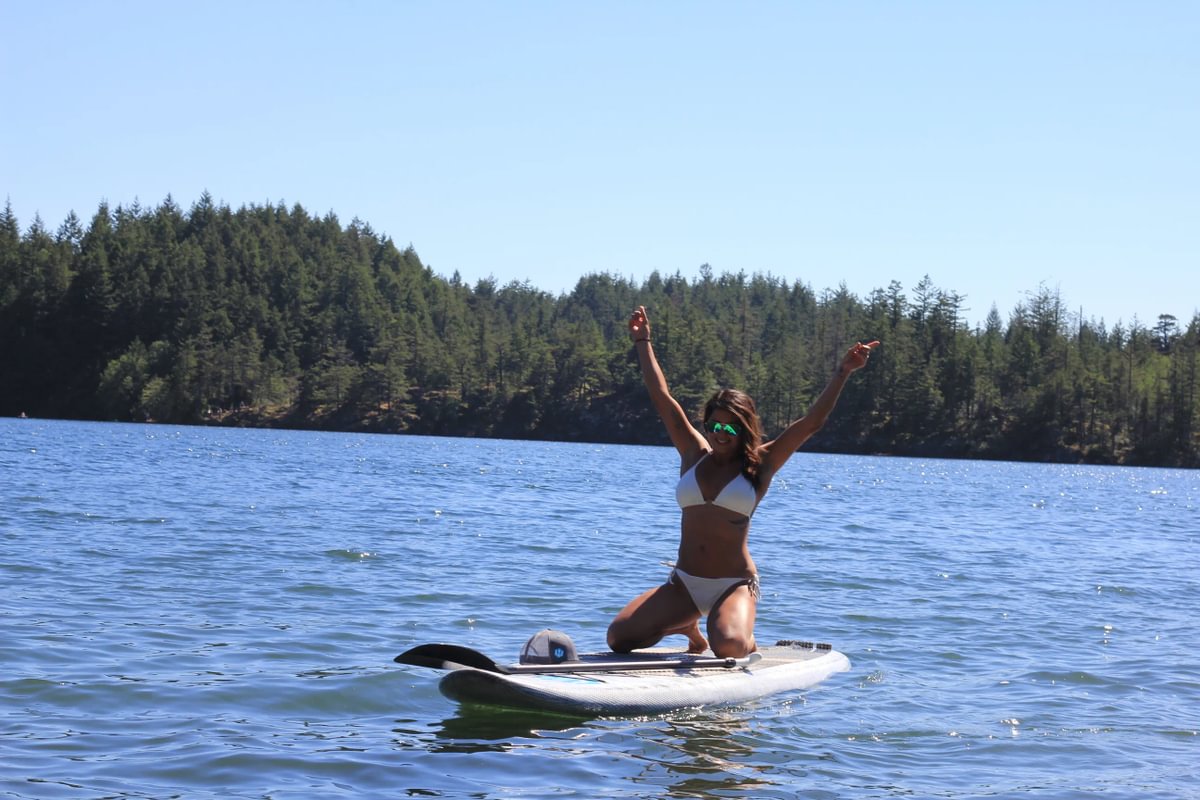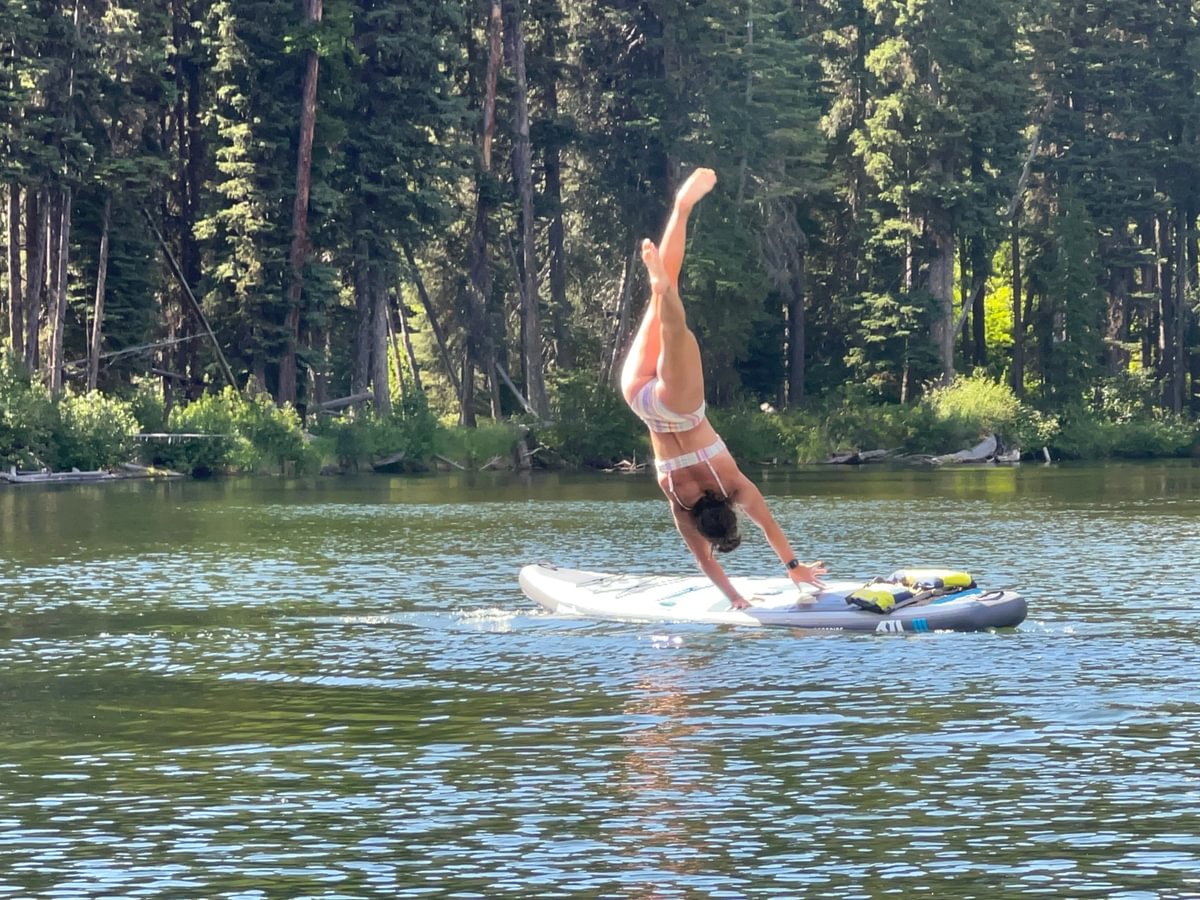What I Wish I Knew Before My First Paddleboarding Trip

Paddleboarding looks easy enough. You stand up, glide across the water, maybe take in a sunset or wave at a curious duck. That’s the idea. But if you’ve ever actually tried it for the first time, you know it often starts out more like an awkward balance challenge with a splash ending.
The good news is, every seasoned paddler has been there. And every wipeout, sunburn, and “wait, which way do I face the fin?” moment is part of the fun. We’ve gathered advice from the Hydrus crew, our community, and some brutally honest Reddit threads to bring you the paddleboarding blog we wish we’d read before day one.
This is not a technical manual. It’s a light, practical, friendly guide to help you avoid some classic mistakes, stay safe, and actually enjoy your first few sessions out on the water.
Choosing the Right Board Matters More Than You Think
When we say the right board makes or breaks your experience, we’re not exaggerating. Too small or unstable, and you’ll be swimming more than paddling. Too large or heavy, and you might feel like you’re steering a barge.
We see a lot of new paddlers start out on borrowed or cheap rental boards and think they hate the sport. In reality, they just haven’t found the right match yet.
If you're not sure what type of board suits your goals, body type, or water conditions, check out our Best Paddle Boards for Beginners Guide. It breaks things down in plain language with real rider input.
Paddleboarding Is Not Just for Standing

Yes, it’s called stand up paddleboarding. But the secret is, you do not have to stand up right away. In fact, you do not have to stand up at all to have a great time.
Many paddlers start on their knees, especially in choppy water or when trying to build confidence. Some of our most peaceful paddles involve sitting down with a snack and floating along like a human-powered lounge chair.
So if your legs are shaking or your balance feels off, go ahead and drop to your knees. Build up gradually. There is no trophy for standing the whole time, and nobody is watching anyway.
Wind and Water Conditions Are Everything
On your first paddle, the weather might look perfect from shore. But once you are out there, wind can push you off course fast. You might start paddling with ease and then realize the return trip is a grind into the wind or current.
What many of us wish we knew: always paddle into the wind or current first. That way, when you are tired, the trip back is easier.
Before launching, use an app like Windy or NOAA Tides & Currents to check water movement. For calm, flatwater sessions, early morning is usually best before the wind picks up.
We recently wrote a full breakdown on navigating tides and currents that is packed with beginner tips if you are heading into coastal or tidal areas.
Inflatable Boards Need to Be Fully Inflated
This sounds obvious until you realize how many people stop pumping too early. A half-inflated inflatable paddleboard is like trying to stand on a giant balloon.
Many beginners give up when they feel their board flexing and wobbling in the middle. That’s usually a pressure problem, not a balance issue. For most inflatable boards, including Hydrus inflatables, the sweet spot is around 12 to 15 PSI.
Yes, that last bit of pumping takes effort. But once you hit proper pressure, the difference in stability is night and day.
Falling In Is Part of the Process

If you are nervous about falling in, we have some news for you. You probably will. And it is completely fine.
The first time it happens is usually the worst. After that, it becomes part of the story. You learn to laugh, to get back on the board quicker, and eventually to recover with the kind of grace that makes people assume you did it on purpose.
The real trick is learning how to fall safely. Avoid landing on the board or your paddle. Fall away and flat when you can, like a starfish. Keep your leash attached in flatwater so your board does not float away. And if you’re in moving water or surf, make sure you are using a quick-release leash setup.
For recommendations on appropriate attire and gear for paddleboarding in various conditions, ensuring comfort and safety, check out our What to Wear Paddle Boarding blog.
Sunscreen Is Not Optional
There is nothing quite like the slow realization that your shins and shoulders have turned the same color as your favorite ripe tomato, crispy, red, and radiating regret. The sun hits hard on the water, and reflection makes it even stronger.
Wear sunscreen, reapply often, and throw a long-sleeve rash guard or sun hoodie in your dry bag. A hat and sunglasses with a strap are also worth the investment, unless you enjoy diving for sunglasses at the bottom of a lake.
Bring Water, Snacks, and a Dry Bag
You are going to be out longer than you think. Paddleboarding is peaceful. It pulls you into that floaty, timeless zone where an hour feels like five minutes. But when the sun hits and your arms are working, hydration matters.
Bring a reusable water bottle, some trail mix or jerky, and stash it all in a dry bag secured to your board. That dry bag can also hold your phone, keys, sunscreen, or anything else you want to keep safe and dry.
Even on short paddles, having a little supply bag adds a lot of peace of mind.
You Are Not Supposed to Be Good Right Away
This one might be the most important. Paddleboarding looks smooth and effortless when done well, but that does not mean it is easy right out of the gate.
Your feet might cramp. Your balance might wobble. You might overgrip the paddle or forget which end of the board is the front. It’s all part of learning.
The paddling community is a welcoming one. People remember their first days, and most are more than happy to share tips, offer a hand, or just give you a thumbs up as you float by. Be patient with yourself and enjoy the learning curve. Every session gets better.
Final Thought: Ask Questions, Stay Curious, and Keep Paddling
There is no single right way to paddleboard. Some people do it for fitness, some for relaxation, some just to see how far they can go. The point is not perfection. The point is presence.
If you are just getting started and want guidance on gear, conditions, or what to expect, we are here to help. And if you are already a few paddles in and have a “wish I knew” moment to share, send it our way. We love hearing from our Hydrus family.
More Helpful Reads for Beginners:
Let us know what other beginner tips you want to see, and we’ll keep the helpful blogs coming. Happy paddling.

About the Author
Angela Nichole leads customer experience and creative direction at Hydrus Board Tech. A CrossFit and yoga instructor with a background in functional fitness and wellness, Angela writes to empower paddlers of all levels. With a passion for movement, community, and quality gear, she brings a grounded and inclusive voice to the Hydrus blog. Get to know Angela here.




Leave a comment